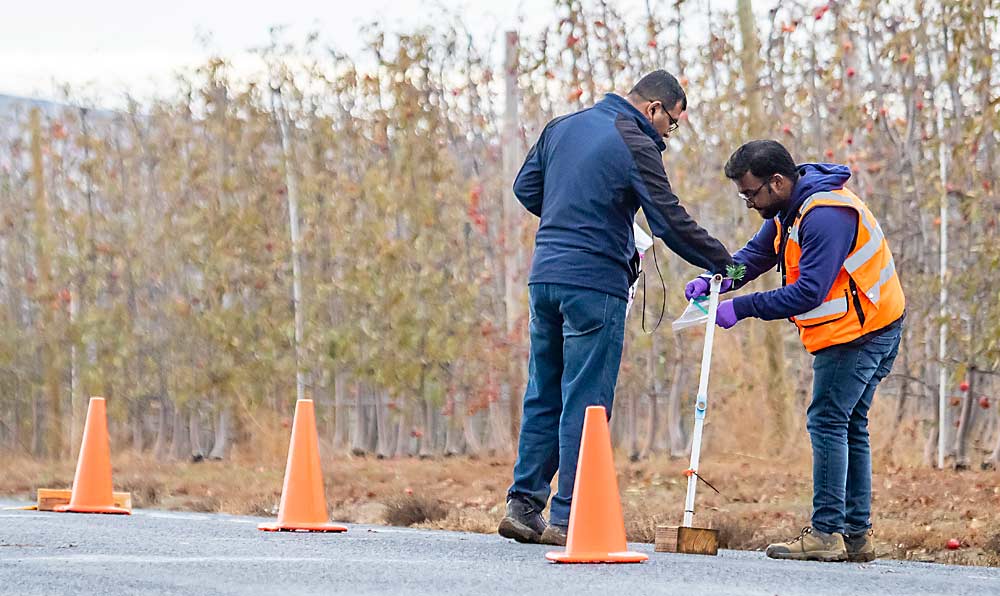February 15, 2019 | Good Fruit Grower
 Against the gray, late-autumn sky, it’s hard to miss the green plume spraying into the dormant orchard.
Against the gray, late-autumn sky, it’s hard to miss the green plume spraying into the dormant orchard.
It’s a very colorful solution to a nearly invisible problem.
Underlying every pesticide label regulation lie complex calculations of risk to protect workers, bystanders and the environment from drift. But the methods federal regulators use to determine drift allowances from airblast sprayers date back decades — and likely overestimate the risk in modern orchards.
“All the restrictions and statements on labels are based on a set of assumptions of a worst-case scenario,” said Washington State University extension specialist Gwen Hoheisel. “If we could have a better estimate and the worst-case scenario is not actually as bad as it’s currently estimated, it could lead to less restrictive labels.”
That’s why Hoheisel, WSU agricultural engineer Lav Khot and a team of research associates were eager to watch the path of that fluorescent green cloud from the airblast sprayer. To the naked eye, little drift beyond the orchard block could be seen. However, dozens of drift samplers transecting up to 600 feet across the adjacent field were poised to catch and measure any particles that reached them.
Continue Reading on Good Fruit Grower
Read the Full Article on Good Fruit Grower: Spray researchers aim to catch their drift